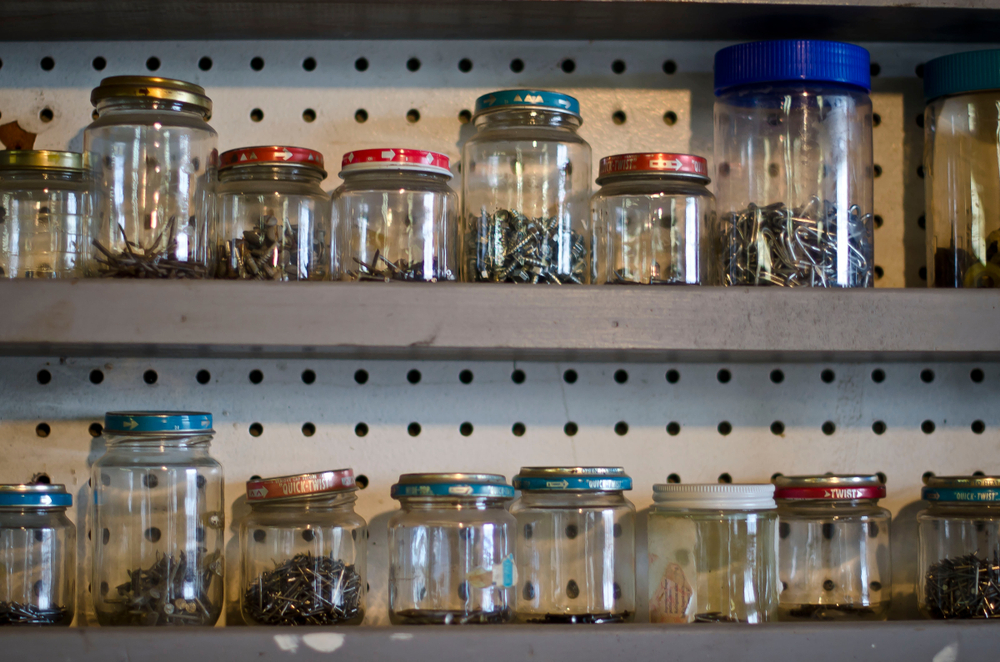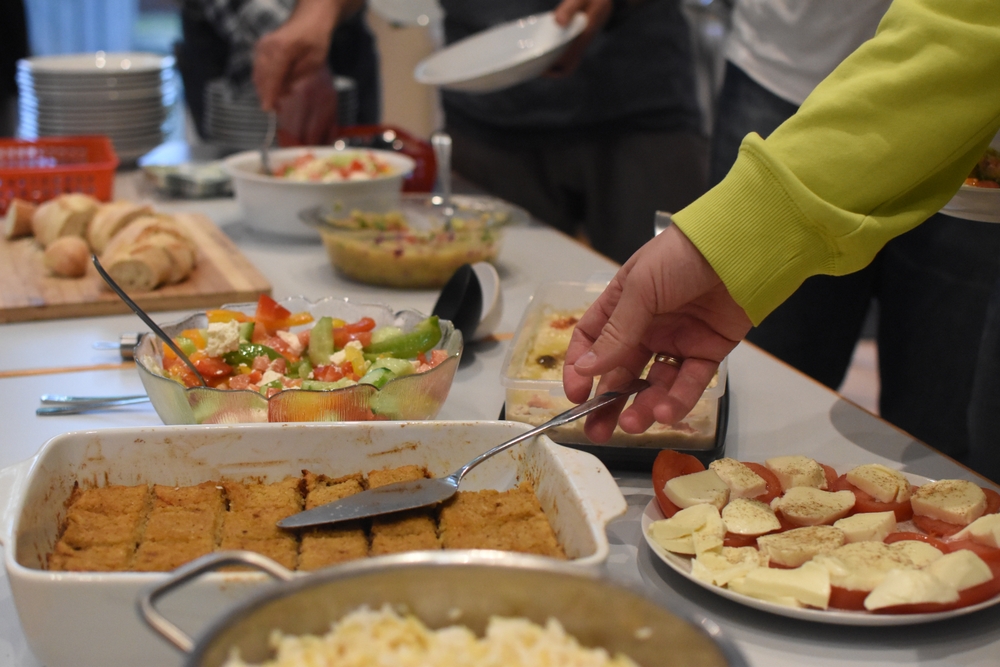14 Old-Fashioned Money-Saving Habits Worth Bringing Back
Living frugally is a practice that has been around for generations. The past offers valuable lessons in managing money wisely and making the most of limited resources. Our ancestors did not have the same luxuries we enjoy today, yet they managed to live comfortably. They embraced simplicity and creativity, stretching every penny. These time-tested strategies still hold relevance today and can help us navigate our financial challenges.
This post may contain affiliate links, which helps keep this content free. Please read our disclosure for more info.
Reusing and Repurposing Household Items to Maximize Savings

Reusing household items is a great way to save money while reducing waste. Items such as glass jars, cardboard boxes, and old furniture can be repurposed for new uses around the house. For instance, you can use jars for storing dry goods or organizing small items, and old clothes can be turned into rags for cleaning. This habit not only helps reduce costs but also minimizes the need for buying new items.
Repurposing also encourages creativity in the home. By thinking outside the box, you can find new uses for items that might otherwise be discarded. It is a simple and effective way to maximize savings while keeping your home organized. The more you reuse, the less money you spend on replacements, making it a frugal practice to embrace.
Growing Your Own Food to Save Money

Growing your own food is one of the most effective ways to save money on groceries. A small garden can yield a variety of fruits, vegetables, and herbs that can be used throughout the year. This reduces the need to purchase expensive produce, which can quickly add up at the store. Whether you have a large backyard or just a few pots on a balcony, growing your own food is a rewarding and cost-effective hobby.
In addition to saving money, homegrown food is often fresher and healthier than store-bought alternatives. It allows you to avoid the added cost of packaging and transportation, making it an even more affordable option. Gardening also provides a sense of accomplishment as you watch your plants grow and thrive. By learning which crops grow best in your area, you can maximize your harvest and make the most out of your gardening efforts.
Canning and Preserving to Cut Grocery Costs

Canning and preserving food is a time-tested way to save money on groceries. When produce is in season and prices are lower, you can preserve fruits, vegetables, and even meats to use throughout the year. This can help you avoid paying higher prices for out-of-season produce. Home-canned goods can be stored for months, allowing you to enjoy homegrown flavors year-round.
The process of canning allows you to buy in bulk when prices are at their lowest, further increasing your savings. Whether you are preserving fruits for jam or vegetables for soups and stews, canning is a great way to stretch your food budget. It is also a healthier option since you control the ingredients, avoiding the added sugars and preservatives found in store-bought versions. With the right tools and knowledge, canning can be an affordable and rewarding practice.
Saving Big With Hand-Me-Downs and Sharing

Hand-me-downs and sharing are practical ways to save money, especially when raising children. Items such as clothes, toys, and even furniture can be passed down within families or shared between friends. This approach reduces the need to buy new items and helps stretch your budget. Sharing also promotes a sense of community, where people help one another by exchanging goods or services.
This practice can be applied to many areas of life, from clothing to household tools. Instead of buying new, consider whether an item can be borrowed or shared with a neighbor or family member. Hand-me-downs not only save money but also reduce waste, making it a sustainable practice. By embracing this frugal living habit, you can save money while fostering a sense of connection with others.
Mending Clothes and Repairing Items to Save Money

Mending clothes and repairing household items is an effective way to save money over time. Instead of discarding worn-out clothing, a simple stitch or patch can give it a new life. Similarly, broken appliances or furniture can often be repaired rather than replaced. This approach helps you make the most of your possessions, ensuring they last longer before needing to be replaced.
Today, learning basic repair skills can save you significant amounts of money. Whether it is fixing a torn shirt, patching up a sofa, or replacing a button, small repairs can prevent you from spending money on replacements. Many online resources can teach you how to tackle simple repairs at home. By taking the time to mend and repair, you can avoid unnecessary expenses and get more use out of your belongings.
DIY Household Cleaning Products for Budget Living

Making your own cleaning products is a budget-friendly alternative to buying expensive commercial cleaners. Simple ingredients like vinegar, baking soda, and lemon juice can be used to create effective and safe cleaning solutions for your home. These ingredients are inexpensive and can handle a variety of tasks, from scrubbing surfaces to removing stains. By making your own cleaners, you can save money while avoiding harsh chemicals.
DIY cleaning products are also environmentally friendly since they reduce the need for plastic bottles and excess packaging. With a few basic ingredients, you can make a multi-purpose cleaner, bathroom disinfectant, or even a homemade laundry detergent. This not only cuts costs but also helps create a healthier living space by using natural ingredients. The savings add up quickly, making DIY cleaning solutions a smart choice for a frugal lifestyle.
Buying in Bulk to Lower Household Costs

Buying in bulk is a simple strategy that can significantly reduce household costs. Purchasing large quantities of staple items, such as rice, pasta, and canned goods, typically costs less per unit. This allows you to stock up on essentials and avoid frequent trips to the store. Buying in bulk also reduces packaging waste, making it an environmentally friendly option.
While bulk buying requires some upfront investment, the long-term savings are worth it. Items that you use regularly can be bought in large quantities to last for months, lowering the cost per use. Bulk buying also reduces the temptation to make unnecessary purchases during regular trips to the store. It is a straightforward way to save money and minimize household expenses.
Maximizing Savings With Coupons and Discounts

Coupons and discounts have long been a reliable way to save money on everyday purchases. Many stores offer paper or digital coupons that can be applied to your shopping, cutting down on costs for everything from groceries to household items. By taking the time to collect and use coupons, you can reduce your total shopping bill. Additionally, many online stores offer discount codes that can help you save even more.
Incorporating coupons and discounts into your shopping routine is an easy way to stretch your budget. Many stores also offer loyalty programs that provide additional savings or rewards. By planning your purchases around sales and using coupons strategically, you can maximize your savings without sacrificing quality. This small effort can lead to significant reductions in your overall spending.
Carpooling and Shared Transportation to Save on Gas

Carpooling and shared transportation are effective ways to save money on gas. By sharing rides with others, you can split the cost of fuel and reduce the number of trips you need to make. Carpooling is not only a way to save money but also helps reduce your carbon footprint by lowering emissions. It is a practical solution for commuters and anyone looking to lower their transportation costs.
Carpooling also has the added benefit of allowing you to use carpool lanes in some areas, saving time during busy hours. Many companies and schools have carpool programs that help connect people who are heading in the same direction. By organizing a carpool, you can build a community of people who are working together to save on fuel costs. This simple strategy can lead to significant savings in the long run.
Avoiding Impulse Purchases to Improve Budget Control

Avoiding impulse purchases is an important habit to develop for better budget control. When shopping, it is easy to be swayed by promotions and advertisements, leading to unplanned buys. By sticking to a shopping list and being mindful of your needs, you can reduce the chances of making unnecessary purchases. This simple approach helps ensure that you only spend on what is necessary and within your budget.
To curb impulse buying, try waiting 24 hours before making non-essential purchases. This gives you time to consider whether the item is truly needed. Additionally, setting a budget for specific categories, such as clothing or entertainment, can help you stay on track. Developing the habit of thoughtful spending helps improve your financial control and long-term savings.
Making Homemade Gifts to Save Money

Making homemade gifts is a thoughtful and frugal way to show someone you care. Instead of spending money on expensive store-bought items, you can create something personal, such as a knitted scarf, a homemade candle, or baked goods. Homemade gifts often have more meaning and are appreciated for the time and effort put into them. They are a perfect solution for birthdays, holidays, or any special occasion.
In addition to being cost-effective, homemade gifts are customizable to suit the recipient’s taste. They allow you to use materials you already have, such as yarn or baking ingredients, further reducing costs. Making gifts is also a fun and creative activity that can involve the whole family. By choosing to make gifts instead of buying them, you can save money while giving something truly meaningful.
Sharing Meals and Potlucks to Save Money

Sharing meals and hosting potlucks is a frugal practice that allows you to enjoy delicious food without overspending. Instead of preparing an entire meal on your own, you can ask friends or family to bring dishes, which reduces the cost for everyone involved. Potlucks are also a great way to try new recipes and enjoy a variety of food without the pressure of cooking it all yourself. This social gathering fosters a sense of community while helping to keep meal costs down.
In addition to saving money, potlucks reduce food waste by allowing everyone to contribute. It is a perfect solution for gatherings, whether casual or formal. You can also take advantage of bulk ingredients and use leftovers to stretch your food further. Sharing meals is a simple yet effective way to enjoy great food while saving on dining expenses.
Buying Secondhand Goods to Save Money

Buying secondhand items is a great way to save money on everything from clothing to electronics. Thrift stores, consignment shops, and online marketplaces offer gently used goods at a fraction of the cost of new items. Secondhand purchases can be just as functional and stylish, making them a smart choice for anyone looking to stretch their budget. Many secondhand items are high-quality, providing great value for the price.
In addition to saving money, buying secondhand helps reduce waste by giving items a second life. It is also a sustainable choice that supports a circular economy. Whether you are looking for furniture, books, or vintage clothing, secondhand shopping offers endless possibilities. With a little time and effort, you can find great deals on items that will serve you well for years.
Borrowing Instead of Buying to Cut Expenses

Borrowing items instead of buying them is a practical way to save money on things you only need temporarily. Whether it is a tool, a book, or a special occasion outfit, borrowing can help reduce unnecessary purchases. Many communities and online platforms have lending libraries or item-sharing programs, allowing you to access what you need without the cost of ownership. Borrowing also promotes a sharing economy, where people support one another by providing resources.
In addition to saving money, borrowing helps reduce clutter and waste. If you only need an item for a short period, borrowing is far more economical than buying it. It also builds stronger community connections as people come together to share goods and services. By borrowing instead of buying, you can avoid unnecessary spending and make the most of available resources.
Adopting frugal habits from past generations can help you take control of your finances and make the most of what you have. These practical steps are not only effective for reducing expenses but also contribute to a more sustainable and meaningful lifestyle. From
This article originally appeared on Avocadu.
